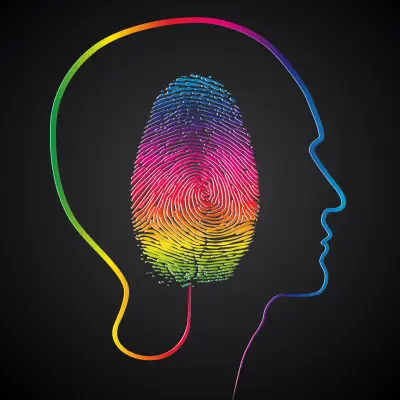Have you ever found yourself caught in the middle of someone else’s conflict or drama? You might have experienced what psychologists call triangulation. This concept is quite intriguing and, unfortunately, more common than you might think. Read on to find out what triangulation means in psychology, how it manifests in relationships, and what you can do if you find yourself in such a situation.
Jump to:
- What is Triangulation?
- The Four Types of Triangulation
- Why Do People Triangulate?
- How Triangulation Works: Examples and Mechanisms
- The Link Between Triangulation and Narcissism
- The Impact of Triangulation in Relationships
- Identifying and Addressing Triangulation
- Triangulation and Abuse
- Frequently Asked Questions About Triangulation
- Study Psychology for £29
What is Triangulation?

Triangulation in psychology refers to a scenario where one person manipulates a relationship between two other people by controlling communication or interaction between them. This creates a 'triangle' of interactions where the manipulator remains at the centre, exerting control over the other two.
The Definition of Triangulation in Psychology
The definition of triangulation in psychology can be described as a tactic used to manipulate and control relationships. It often involves introducing a third party into a two-person conflict to distract, divide, or conquer. This third party could be another person, a group, or even an abstract concept like work or hobbies.
Recommended for you!
Best SellersThe Four Types of Triangulation
Understanding the different types of triangulation can help you recognise and navigate these dynamics in various relationships. Here are the four main types of triangulation:
1. Classic Triangulation
Classic triangulation involves three people where one person manipulates the interactions between the other two. This form of triangulation is the most common and can be found in many settings, including families, workplaces, and social groups. The manipulator often seeks to control the flow of information and communication between the other two individuals, creating tension and conflict to maintain their position of power.
2. Reverse Triangulation
In reverse triangulation, the third party is brought into the conflict to support the manipulator against the second party. This type can be particularly insidious as it often involves the manipulator portraying themselves as the victim to garner sympathy and support from the third party. By doing so, they create an alliance that strengthens their position and isolates the second party.
3. Divisive Triangulation
Divisive triangulation occurs when the manipulator creates a conflict between two parties to keep them divided. This type of triangulation is used to ensure that the two parties do not unite against the manipulator. By fostering distrust and animosity between them, the manipulator can maintain control and prevent any potential threats to their authority.
4. Constructive Triangulation
Constructive triangulation is rare but can occur in therapeutic settings where a third party, such as a therapist, helps mediate and resolve conflicts. In this scenario, the third party acts as a neutral facilitator who aids in communication and understanding between the two conflicted parties. Unlike the other types, constructive triangulation aims to heal and resolve issues rather than manipulate and control.
Why Do People Triangulate?
People triangulate for various reasons, often stemming from a need for control, attention, or validation. It can be a sign of deeper psychological issues, such as narcissistic or borderline personality disorders. Triangulation is harmful because it undermines trust, creates conflict, and damages relationships.
How Triangulation Works: Examples and Mechanisms
To triangulate someone means to create a scenario where two people are pitted against each other or one is kept in the dark about what the other is doing. This can be done through gossip, lies, or selective information sharing, often to create division or to shift the focus away from the manipulator's actions.
What is an Example of Triangulation?
Consider a scenario in a workplace where a manager tells one employee that another is underperforming, then tells the underperforming employee that the first employee is out to get their job. This creates tension and competition between the employees, distracting them from the manager's inadequacies.
The Link Between Triangulation and Narcissism

Triangulation is a common tactic used by narcissists to maintain control and dominance in their relationships. Narcissists thrive on creating chaos and division among those around them, ensuring that they remain the central figure of attention and power.
By manipulating communication and interactions between others, narcissists can foster mistrust, rivalry, and confusion, which helps them to maintain their superior position and deflect attention from their own behaviour. This strategy not only satisfies their need for control and admiration but also isolates their targets, making it difficult for them to unite and challenge the narcissist’s authority.
Narcissists might tell their partner that a friend or family member disapproves of them, then tell that friend or family member that their partner is being unreasonable or difficult. This keeps everyone off balance and focused on each other, rather than on the narcissist's behaviour.
The Impact of Triangulation in Relationships
In relationships, triangulation can be particularly damaging. It erodes trust and fosters a climate of suspicion and competition. The manipulator thrives on the chaos they create, maintaining control and attention by keeping others on edge.
What is an Example of Triangulation in a Relationship?
Imagine a couple where one partner frequently brings a third person into their arguments. They might say, "Even your best friend thinks you're overreacting," or "My mother agrees with me on this." This shifts the focus from the actual issue to the opinions of others, making resolution difficult.
What is Triangulation in a Family Setting?
In family settings, triangulation often involves parents, children, or siblings. For example, a parent might align with one child against the other, creating a competitive and unhealthy environment. This can lead to long-term issues such as sibling rivalry and lack of trust.
Identifying and Addressing Triangulation

How Do You Know If You're Being Triangulated?
Recognising triangulation can be tricky, but some signs include feeling pitted against others, receiving mixed messages, or feeling like you’re constantly in competition with someone else. If you often find yourself confused or anxious about your standing with others due to one person’s influence, you might be experiencing triangulation.
What to Do If Someone is Triangulating You?
If you suspect you are being triangulated, the best approach is to establish direct communication with the other involved parties. Clarify any misunderstandings and address issues head-on without the manipulator's involvement. This can help dismantle the triangle and restore honest, straightforward relationships.
How to Protect Yourself from Triangulation
To protect yourself from triangulation, maintain open and direct communication. Don't rely on second-hand information and avoid getting involved in someone else's conflicts. Setting clear boundaries and being assertive about your needs and feelings can also help keep triangulation at bay.
Triangulation and Abuse
Is Triangulation Abuse?
Triangulation can indeed be a form of emotional abuse, especially when used to control and manipulate others over an extended period. It can create long-lasting psychological harm and erode self-esteem and trust.
Is Triangulation a Gaslighting?
Triangulation and gaslighting often go hand-in-hand. While triangulation involves manipulating relationships, gaslighting involves manipulating someone's perception of reality. Both tactics are used to control and confuse the victim, making them doubt their experiences and feelings.
Frequently Asked Questions About Triangulation
How can you beat narcissist triangulation?
To beat narcissist triangulation, focus on direct and open communication with the other parties involved. Don't engage in gossip or allow yourself to be manipulated into taking sides. Establish strong boundaries and seek support from trusted friends or professionals if needed.
Is triangulation a narcissistic trait?
Triangulation is a common tactic used by narcissists to maintain control and power over their relationships. By keeping others divided and focused on each other, the narcissist ensures they remain the centre of attention and authority.
Is triangulation passive-aggressive?
Triangulation can be considered a passive-aggressive tactic because it involves indirect manipulation and control rather than direct confrontation. The manipulator uses subtle means to influence others and achieve their desired outcome.
What is the most common type of triangulation?
The most common type of triangulation is classic triangulation, where one person manipulates the interactions between two others to maintain control and influence. This type is frequently observed in family dynamics, romantic relationships, and workplace settings.
Recommended for you!
Best SellersStudy Psychology for £29
If you're interested in learning more about psychological concepts like triangulation, consider exploring the Psychology Diploma Course offered by Centre of Excellence. This detailed course is available at a discounted price of £29 and provides valuable insights into various aspects of psychology, helping you enhance your understanding and improve your relationships.













